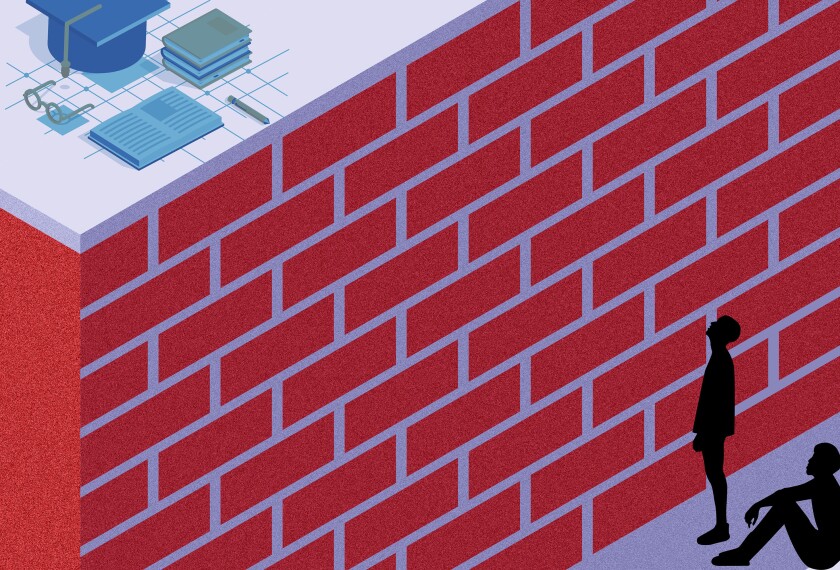When it comes to improving academic achievement for early adolescents, a study out of Philadelphia suggests that the strategy of shifting from middle schools to K-8 schools may not do the trick—at least not in and of itself.
Read an of “Re-examining Middle School Effects: A Comparison of Middle Grades Students in Middle Schools and K–8 Schools” from the .
The report, published last month in the peer-reviewed American Journal of 91��Ƭ����Ƶ, comes as city school districts including Cincinnati and New York are joining Philadelphia in phasing out middle schools in favor of K-8 grade configurations. (“City Districts Embracing K-8 Schools,” May 19, 2004.)
But Christopher C. Weiss, the lead author of the new study, said it turned up no evidence that K-8 schools alone confer such benefits in Philadelphia. All other things being equal, the study found, 8th graders in that city’s K-8 schools had no higher grade point averages and no fewer F’s or absences than their peers in middle schools.
The study did find, however, that 8th graders in K-8 schools felt safer and scored higher on measures of self-esteem than their middle school counterparts.
“We were surprised at the academic results, given the rhetoric and the arguments for K-8 schools,” said Mr. Weiss, who is the director of the Quantitative Methods in the Social Sciences program at Columbia University in New York City.
But Mr. Weiss and other experts also noted some caveats: The study involved data from the mid-1990s—before a district initiative to improve secondary schooling—and looked at students’ grades rather than the more objective measure of standardized-test scores. Using such tests as a yardstick, researchers at Baltimore’s Johns Hopkins University studied mathematics achievement in Philadelphia public schools more recently, from 2003 to 2005, and came to a different conclusion. They determined that students learned more between 5th and 8th grade in highly disadvantaged K-8 schools than they did in middle schools with similar demographic makeups.
“The Columbia study informs the changes in Philadelphia, but I wouldn’t say it tells them to slow down or tells them that they’re wrongheaded,” said Dale A. Blyth, an associate dean at the University of Minnesota-Twin Cities, who has also done studies comparing types of schools for young adolescents.
Safe and Sound?
The Columbia University researchers said the 210,000-student Philadelphia school district made for a unique study site because it had roughly equal numbers of K-8 and middle schools at the time of the study.
The researchers collected data on more than 1,500 randomly chosen 8th graders who attended either middle schools or K-8 schools during the 1995-96 school year. Initially, they found, the K-8 schools came out ahead on most academic and well-being measures, from grades to suspension rates.
In size, though, the number of students per grade level was four times larger on average in the middle schools than in the K-8 schools. Middle schools also had higher concentrations of minority students. When the numbers were adjusted to account for those kinds of differences, the K-8 schools’ edge disappeared in all but two areas: self esteem and perceptions of school safety.
As a result, the authors conclude, efforts to improve learning in the middle grades by merely changing the form of schooling are “unlikely to succeed.”
Philadelphia school officials said last week the findings would not deter them from pursuing their plan to eliminate all but eight of its 45 remaining middle schools by 2009. Paul G. Vallas, the school system’s chief executive officer, said the Columbia study is unconvincing, in part, because it draws on data collected years before Philadelphia’s secondary school improvement efforts began.
In contrast, he pointed to results from nationally normed and state exams taken by the city’s 8th graders during the 2004-05 school year. While the raw test scores don’t take into account any demographic differences between the two schooling types, they do show 8th graders in middle schools trailing their K-8 counterparts by large margins in mathematics, reading, and language arts.
“The bottom line is that we’ve got irrefutable proof that the K-8 environment is more conducive to learning,” Mr. Vallas said. “The middle schools just weren’t working.”



